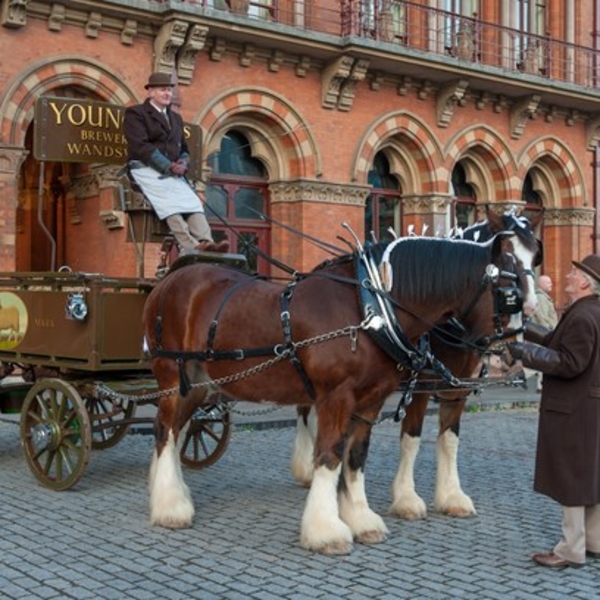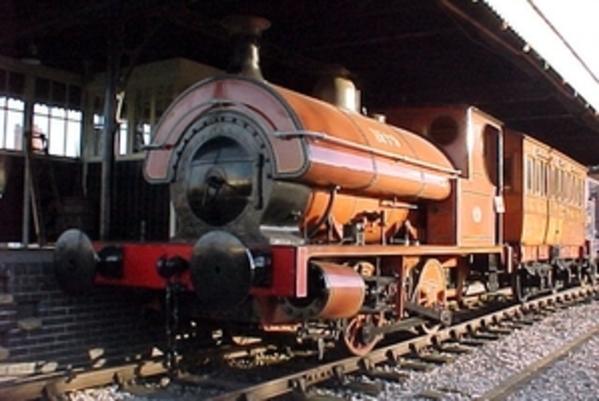Beer highlight of St Pancras celebrations
Added: Sunday, January 14th 2018

The historic link between beer and St Pancras International in London is one of the highlights of a year-long celebration to mark the Grade I-listed Gothic station’s 150th anniversary.
The station, built by the Midland Railway, opened in 1868 with the key aim of bringing beer from Burton-on-Trent to London. The principal role of the new railway system in the 19th century was to transport goods, not people, and it opened up Britain to brewers in Burton, which at the time was the most important brewing town in the country.
Allsopp, Bass, Worthington and other Burton brewers were at the forefront of the pale ale revolution in the Victorian period. They exported beer abroad by ship but internal journeys were painfully slow. But when the first trains steamed into Burton in 1839 the brewers were able to send beer at speed to such important towns and cities as Derby and Birmingham where large numbers of industrial workers demanded beer for refreshment.
When the tracks extended to London, the brewers found they could convey beer to the capital at a pace that would have seemed unimaginable when coaches and canals offered the only means of transport. Soon, most parts of Britain could be reached within a day and the brewers built their own tracks in Burton to move beer from breweries to the station.
Bass, the biggest brewer in the town, rented a large warehouse in London close to St Pancras. It had a capacity of 120,000 barrels and a workforce of 150 men, where wooden hogsheads, each containing 54 gallons, were broken down into smaller casks and bottles for delivery to pubs.
A year later, Bass moved this operation to the cellars of the station itself. The large space, known as the Undercroft, was designed by engineer W H Barlow, who used iron columns and girders to maximise space. He said that “the length of a beer barrel became the unit of measure, upon which all the arrangements of this floor were based”. The Undercroft is now the departure lounge for Eurostar passengers.

The cost advantages of the railway were considerable. Before the arrival of the train, it cost £3 to transport one ton of ale – approximately five barrels – to London for a journey that lasted more than a week. The same amount of ale was sent to London by train at a cost of 15 shillings.
The impact of fast transport, lower costs and higher profits was far-reaching. The total production of beer in Burton increased from some 70,000 barrels a year in 1840 to 300,000 10 years later. Bass, forging ahead as the leading brewer in the town, saw its sales increase from around 40,000 barrels a year in the period between 1837 and 1842 to 148,000 by 1853. By 1860, Bass produced 341,527 barrels, placing it on a level with the biggest London brewers such as Barclay Perkins and Truman. By 1867, Bass was brewing close to one million barrels a year, making it the biggest brewer in the world.
Thanks to St Pancras, Londoners were introduced to a new style of beer – pale ale. While beer destined for India was first brewed in East London and exported from the East India Docks, it was not sold on the domestic market. But due to the fine spring waters of the Trent Valley, the Burton brewers were able to make superior pale beers and they became available to Londoners who were more used to dark mild, porter and stout.
The train not only revolutionised the transport of beer but also the styles of beer preferred by London drinkers. T R Gourvish and R G Wilson, in The British Brewing Industry 1830-1980 (1994), describe pale ale as the beer of the railway age.
Fittingly, the owners of St Pancras International, HS1, H Hcommissioned a special beer to celebrate the station’s anniversary. HS1 approached Molson Coors, the Canadian-American group that now occupies the former Bass breweries in Burton, but it was not interested in brewing a beer. HS1 turned instead to a London brewer, Lost Rivers, which has produced a 4.8 per cent India Pale Ale.
Lost Rivers, as its name suggests, not only produces beer but promotes the lost rivers of London. One is the Fleet that gave its name to Fleet Street, former centre of the newspaper industry, and which ran under St Pancras Station.
Lost Rivers has not yet completed its brewery and the IPA was brewed for it by Charles Wells in Bedford: Bedford also has close associations with St Pancras as it’s on the Thameslink line that runs to Brighton via the London station.
Lost Rivers IPA is on sale in the Betjeman Arms at St Pancras and in other outlets at the station. A bottled version is due to appear in February and already Waitrose and other retailers are interested in stocking it. The first batch was delivered by horse-drawn dray from Young’s, the former Wandsworth brewery: its subsidiary, Geronimo Inns, runs the Betjeman Arms.
There will be a series of events at the station throughout the year, with a beer festival planned for October. The events will mark the history of St Pancras, how it survived two world wars, and the role of women workers at the station.
Post World War Two, the station became rundown and was earmarked for closure, with its services due to be taken over by neighbouring King’s Cross. But a vigorous campaign led by poet and train lover Sir John Betjeman saved the station. It has enjoyed a remarkable renaissance as the terminus for HS1 and Eurostar. It has fine shopping malls, restaurants and a hotel – plus the pianos where travellers can pause to tinkle the ivories.
Go and marvel at the architecture, the rich history, the beery associations and sample a pint of IPA in the Betjeman Arms. It will be worth missing a few trains for.
*As well as St Pancras, visit the National Brewery Centre in Burton-on-Trent that traces the history of brewing in the town and has steam locomotives on sight – see above (www.nationalbrewerycentre.co.uk). For further reading see the author’s Story of Brewing in Burton-on-Trent (History Press, 2011) and IPA – A Legend in Our Time (Pavilion Books, 2017).









